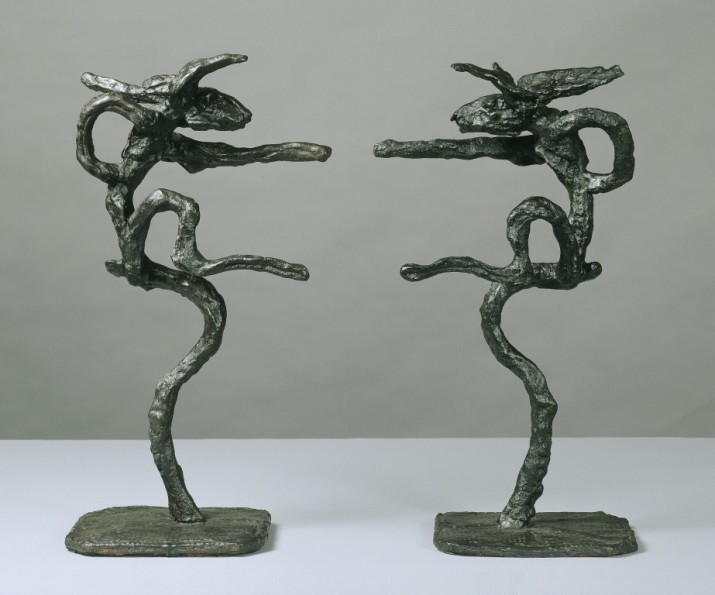Barry Flanagan embraced the physical world of sculpture at the early age of seventeen. He is famous for his distinctive spontaneous animal bronze sculptures, with his most common motif the hare. In the 1960’s, he experimented with a variety of materials, such as stone, marble, steel, including sand, concrete, clay and twigs. He later turned to permanent materials, bronze in particular and started creating sculptures of hares in the 1980’s after the image of one “unveiled” itself to him. He was fascinated by the animal’s energy and implicit humour. Legendary Russian dancer Vaslav Nijinsky and sculptor Auguste Rodin inspired Flanagan’s bronze dancing Nijinsky Hare series.
The artist captures the essence of movement in a resolutely modern style. Flanagan was born in 1941 in North Wales. He studied at Birmingham College of Art and Crafts (1957–1958) before going on to St. Martins School of Art in London in 1964. Flanagan graduated in 1966 and went on to teach at St. Martins School of Art and the Central School of Arts and Crafts (1967–1971). Flanagan represented Britain at the Venice Biennale in 1982. A major retrospective of his work was held at the Fundación ‘La Caixa’ Madrid in 1993 that toured to the Musée des Beaux-Arts de Nantes in 1994. Flanagan’s bronze hares have also been exhibited in many outdoor spaces, most notably on Park Avenue in New York in 1995–96 and in Chicago’s Grant Park in 1996. In 1999, he had an exhibition at the Tate Gallery, Liverpool (2000). In 2002, a major exhibition of his work was shown at the Kunsthalle Recklinghausen, Germany, and travelled to the Musée d’Art Moderne et d’Art Contemporain, Nice, France. Flanagan died on August 31, 2009.
